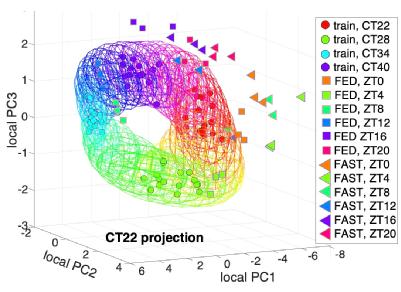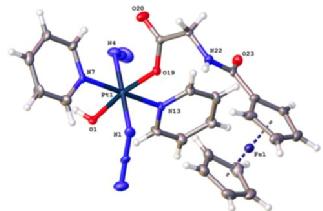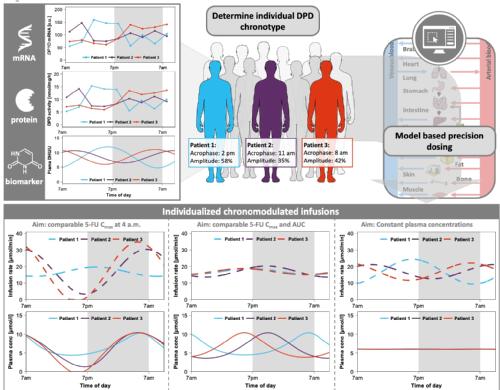Publications
A complete up-to-date list of publications of Robert can be found on Google Scholar and full-texts might be available from the Warwick Research Active Portal (WRAP).
Zinc finger homeobox-3 (ZFHX3) orchestrates genome-wide daily gene expression in the suprachiasmatic nucleus
 |
New preprint from Pat Nolan's lab by Akaknsha Bafna looks at the contribution of the ZFHX3 deletion in adult mice for SCN transcriptome and cistrome. Vadim contributed TimeTeller analysis of SCN data suggesting a significant phase advance in entrained SCN of mutant mice. |
TafkaTT: The algorithm first known as TimeTeller - now out in PLoS Computational Biology
 |
Very long time in the making and already online as a preprint, now finally out as peer-reviewed paper with contributions from 2 MRC DTP students from the lab (Laura Usselmann and Vadim Vasilyev) and in collaboration with David Rand as well as Sascha Ott, Francis Lévi and George Bjarnasson. |
Tuning the photoactivated anticancer activity of Pt(IV) compounds via distant ferrocene conjugation
 |
Led by Huayun Shi from the Sadler lab we discover and characterise novel photoactive prodrugs for cancer treatment that offer potential for spatially-selective anti-tumour activity with minimal effects on normal tissues.Photoactive metal complexes in particular, have a rich and relatively unexplored photochemistry, especially an ability to undergo facile intersystem crossing and populate triplet states. Here, the photoactive octahedral Pt(IV) complex trans,trans,trans-[Pt(N3)2(OH)2(py)2] was conjugated to ferrocene to introduce novel features into a candidate photochemotherapeutic drug. Visible light irradiation gives rise to micromolar activity for these compounds in ovarian, lung, prostate and bladder cancer cells |
5-FU PKPD model suggest patient chronotypes!

Lead by the Thorsten Lehr's PKPD group at the University of Saarland, this paper is taking a treasure trove of patient 5-FU PK data amalgamated with DPD activity data from health people to establish a novel PKPD model of 5-FU that captures the extent of diurnal variations in DPD activity and can help investigate individualized chronomodulated 5-FU therapy through testing alternative personalized dosing strategies. This work is based on the the discovery of diurnal variations impacting cancer therapy. Especially, use of chronomodulated treatment with 5-fluorouracil (5-FU) has gained significance. Studies indicate high inter-individual variability in diurnal variations in dihydropyrimidine dehydrogenase (DPD) activity – a key enzyme for 5-FU metabolism. However, the influence of individual chronotypes on chronomodulated therapy was unclear but is needed to optimize precision dosing of chronomodulated 5‑FU.
